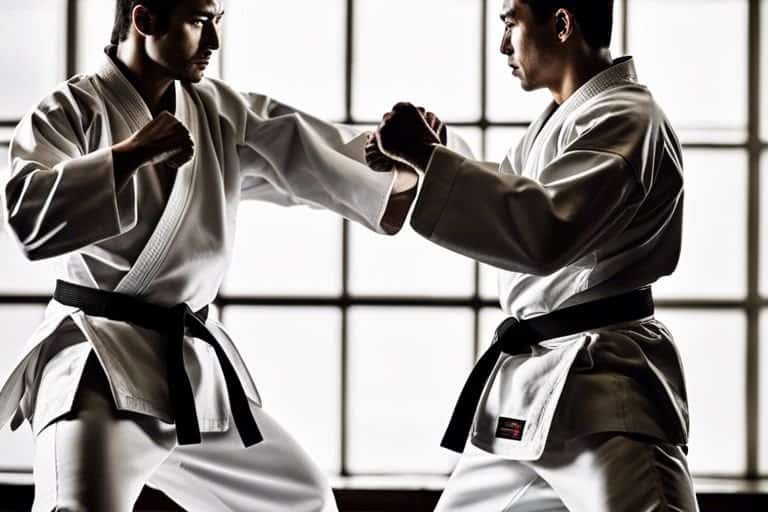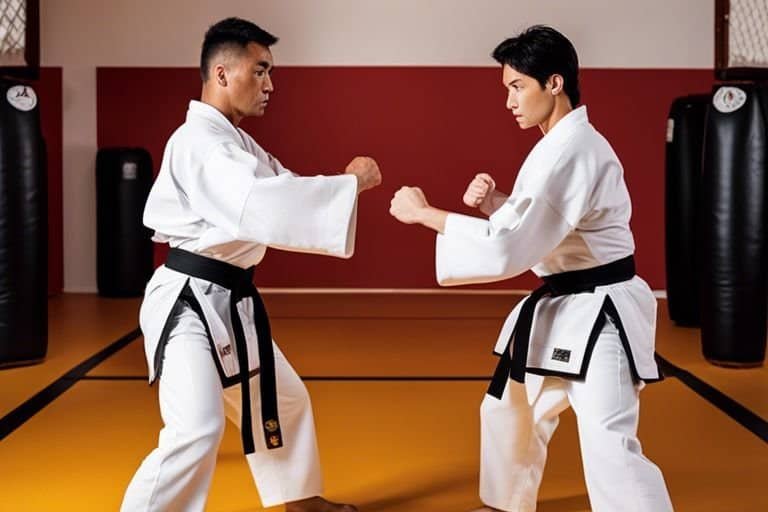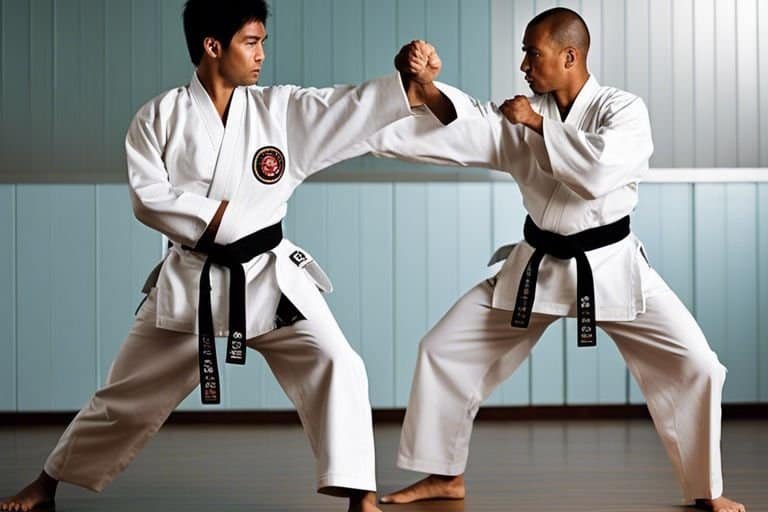Replete with a rich history and cultural significance, karate is one of the most popular and widely practiced martial arts in the world. However, it is often misconstrued and confused with other martial arts, such as taekwondo, kung fu, and judo. Understanding the key differences between karate and other martial arts is essential in gaining a deeper appreciation for each discipline’s unique techniques, philosophies, and principles. From the striking techniques and use of weapons to the grading systems and competitive formats, each martial art possesses distinct characteristics that set it apart from the others. Additionally, the self-defence applications and training methods vary significantly, highlighting the diverse nature of these ancient combat practices. Whether you are a seasoned martial artist or someone new to the world of self-defence, grasping the disparities between karate and other martial arts will undoubtedly enrich your understanding of these powerful disciplines.
Key Takeaways:
- Karate focuses on striking techniques such as punching, kicking, knee and elbow strikes, while other martial arts like Judo and Jiu-jitsu emphasise grappling and throwing techniques.
- Karate places a strong emphasis on kata (forms) and kumite (sparring), whilst other martial arts may have a greater focus on ground fighting, self-defence, or weapon training.
- Whilst Karate originated in Okinawa, Japan, other martial arts have origins in different countries such as Judo from Japan and Kung Fu from China.

Historical Context and Evolution
Understanding the historical context and evolution of martial arts is essential in appreciating the key differences between Karate and other forms. The roots of these arts are deeply intertwined with the history and culture of the regions from which they originated. Over centuries, these practices have evolved in response to varying social, political, and philosophical influences.
Origin of Karate
The origins of Karate can be traced back to the Ryukyu Kingdom, an independent kingdom that existed in what is now Okinawa, Japan. It is believed that the development of Karate was influenced by indigenous Ryukyuan martial arts, as well as Chinese martial arts that were introduced to the region. Over time, these influences merged to form the basis of what is known as Karate today. Initially practised in secrecy, Karate eventually spread beyond Okinawa, undergoing further development and refinement in mainland Japan.
Development of Other Martial Arts
Conversely, other martial arts such as Kung Fu, Judo, and Taekwondo have their own distinct histories and cultural influences. For example, Kung Fu has deep roots in Chinese history and philosophy, with a wide array of different styles and techniques. Judo, on the other hand, originated in Japan and focuses on grappling and throwing techniques. Taekwondo, originating from Korea, places emphasis on fast kicking techniques. The development of these martial arts was shaped by the unique traditions, philosophies, and warfare tactics of the regions in which they originated.
It is important to note that while these martial arts have their own unique characteristics, they also share common principles such as discipline, respect, and continuous self-improvement. Each art has its own strengths and weaknesses, and practitioners are often drawn to a particular style based on their individual preferences and goals.

Philosophical and Spiritual Differences
In addition to the physical differences, the philosophical and spiritual aspects of karate set it apart from other martial arts. Understanding these differences can provide a deeper appreciation for the unique nature of karate.
The Philosophy Behind Karate
Karate is more than just a physical discipline; it is a way of life. The philosophy of karate is deeply rooted in the principles of discipline, respect, and self-improvement. Practitioners of karate strive not only to master the physical techniques but also to cultivate a strong sense of self-discipline and mental fortitude. This focus on self-development and personal growth sets karate apart from other martial arts.
Philosophical Foundations of Other Martial Arts
While all martial arts share some common principles, their philosophical foundations can vary significantly. Some martial arts place greater emphasis on spiritual enlightenment and harmony with the universe, whereas others focus more on combat techniques and physical prowess. The goals and guiding philosophies of other martial arts are diverse and may not necessarily align with the holistic approach of karate.
It is important to recognise that each martial art has its own cultural and historical context, which influences its philosophical foundations. Understanding these differences can foster respect and appreciation for the unique philosophies embodied in various martial arts.
Techniques and Training
When it comes to the techniques and training involved in martial arts, each discipline has its own unique approach. If you want to delve deeper into this topic, I recommend checking out The Differences in Martial Arts Styles | by Andy Britnell for an insightful perspective on the subject.
Key Techniques in Karate
Karate is known for its emphasis on striking techniques such as punches, kicks, and knee strikes. The training focuses on developing explosive power and precise execution of these techniques. Additionally, practitioners learn defensive manoeuvres and controlling opponents through strategic positioning and blocking.
Furthermore, kata, the predefined sequences of movements, play a crucial role in refining techniques and mental discipline in karate. This holistic approach to training encompasses both physical and mental fortitude, setting karate apart from other martial arts.
Distinct Techniques in Other Martial Arts
On the other hand, other martial arts such as taekwondo and kung fu place a greater emphasis on high kicks, acrobatic movements, and grappling techniques. The fluidity of motion and balance are key components in these disciplines, distinguishing them from the more direct and linear movements in karate.
Moreover, disciplines like jiu-jitsu and muay thai are renowned for their focus on ground fighting, clinching, and elbow and knee strikes, adding a dimension of close-range combat not commonly found in traditional karate.
Understanding the nuances of these distinct techniques in other martial arts provides valuable insight into the diversity and rich history of martial arts as a whole, offering a well-rounded perspective on the subject.
Competitive Aspect and Sport
When comparing karate with other martial arts, one of the key differences lies in its competitive aspect and sport. While some martial arts, such as judo and taekwondo, are well-known for their competitive sport events in the Olympics and other international tournaments, karate has faced challenges in achieving the same level of recognition. What are the differences between karate and other martial arts? Why is karate not considered a true martial art by some experts?
Karate Competitions
Karate competitions are traditionally based on forms (kata) and sparring (kumite), where practitioners demonstrate their skills and techniques. These events are often judged based on precision, power, and control, with participants aiming to achieve perfection in their movements. Competitive karate requires a deep understanding of technique, strategy, and mental discipline, making it a rigorous test of a practitioner’s abilities.
Successful participation in karate competitions can lead to the attainment of titles and rankings, boosting the reputation of the practitioner and their dojo. It also fosters a sense of camaraderie and sportsmanship within the karate community, encouraging continuous improvement and dedication to the art.
Competitions in Other Martial Arts
Competitions in other martial arts often encompass a wide range of disciplines, including striking, grappling, throwing, and ground fighting. Unlike karate, some martial arts have established professional leagues and lucrative opportunities for talented athletes to compete at the highest level. The competitive landscape in these arts may involve intense physical contact and a focus on achieving victory through a combination of strength, agility, and tactical expertise.
Furthermore, other martial arts such as MMA (Mixed Martial Arts) have gained widespread popularity for their no-holds-barred approach, incorporating techniques from various disciplines to create a dynamic and unpredictable competitive environment.
Practical Applications and Self-Defense
Self-Defense Strategies in Karate
Karate is known for its emphasis on striking techniques, including punches, kicks, and knee strikes. These techniques are designed to swiftly disable an attacker and create an opportunity to escape from a threatening situation. In addition to the physical techniques, karate also teaches mental preparedness and awareness to identify potential dangers and react effectively.
In karate, self-defence is not only about learning how to physically defend oneself, but also about developing the discipline to avoid unnecessary confrontations. Training in karate instils a sense of confidence and control that can deter potential attackers, making it a comprehensive system for self-protection in a variety of situations.
Self-Defense in Other Martial Arts
Other martial arts, such as judo and jiu-jitsu, focus on grappling and submission techniques that are effective for neutralising an aggressor. These arts prioritise close combat and ground fighting, providing practitioners with the skills to defend themselves and control opponents in close quarters.
While karate primarily involves striking, other martial arts complement this with different emphasis on defensive tactics and techniques for handling armed attackers. Each martial art has its own unique approach to self-defence, providing a comprehensive understanding of how to protect oneself in various situations.
Conclusion: Key Differences Between Karate and Other Martial Arts
In conclusion, it is clear that karate possesses unique characteristics that distinguish it from other martial arts disciplines. The reliance on powerful strikes, deliberate movements, and the use of the body’s natural weapons set karate apart from disciplines such as judo and jiu-jitsu. Additionally, the emphasis on self-discipline, mental focus, and spiritual development further differentiates karate from other martial arts. While each martial art has its own strengths and benefits, understanding the key differences can help individuals make informed decisions about which discipline aligns best with their personal goals and interests.
FAQ
Q: What are the key differences between Karate and other martial arts?
A: Karate focuses on powerful strikes and linear movements, while other martial arts such as Taekwondo emphasise dynamic kicking techniques. Additionally, Karate places a strong emphasis on traditional kata (forms) and physical conditioning, whereas other martial arts may have a different focus such as ground fighting or weapon training.
Q: How does the training approach differ in Karate compared to other martial arts?
A: Karate training typically involves a combination of solo practice, partner drills, and sparring. In contrast, other martial arts like Judo or Brazilian Jiu-Jitsu may place a greater emphasis on grappling and ground-based techniques. The training in Karate also often includes the development of mental discipline and moral values.
Q: Are there different philosophies and principles between Karate and other martial arts?
A: Yes, Karate is rooted in the Bushido code of ethics, emphasising traits such as honour, respect, and self-discipline. Other martial arts may follow different philosophies, such as the Taoist principles in Kung Fu or the spiritual aspects of Aikido. Different martial arts also have their unique guiding philosophies and principles.
Q: How do the grading systems vary between Karate and other martial arts?
A: Karate typically uses coloured belts to signify rank, with a clear progression from beginner to advanced levels. In contrast, other martial arts like Kung Fu or Muay Thai may use sashes or armbands as a ranking system. The criteria for advancement and the significance of each rank can also differ between martial arts disciplines.
Q: What are the cultural influences that distinguish Karate from other martial arts?
A: Karate has strong cultural ties to Okinawan and Japanese traditions, with a focus on formality and etiquette in training. Other martial arts, such as Capoeira with its Afro-Brazilian roots or Kendo with its Japanese swordsmanship heritage, have their own distinct cultural influences that shape the martial art’s practice and philosophy.



